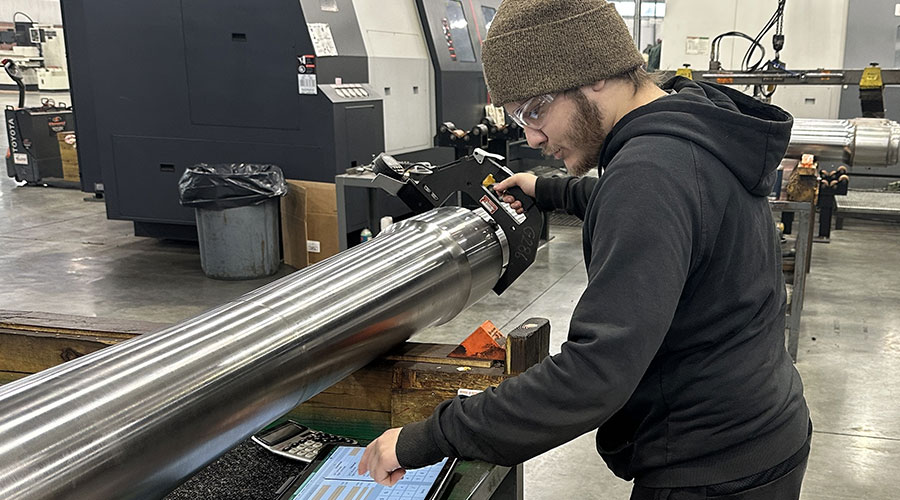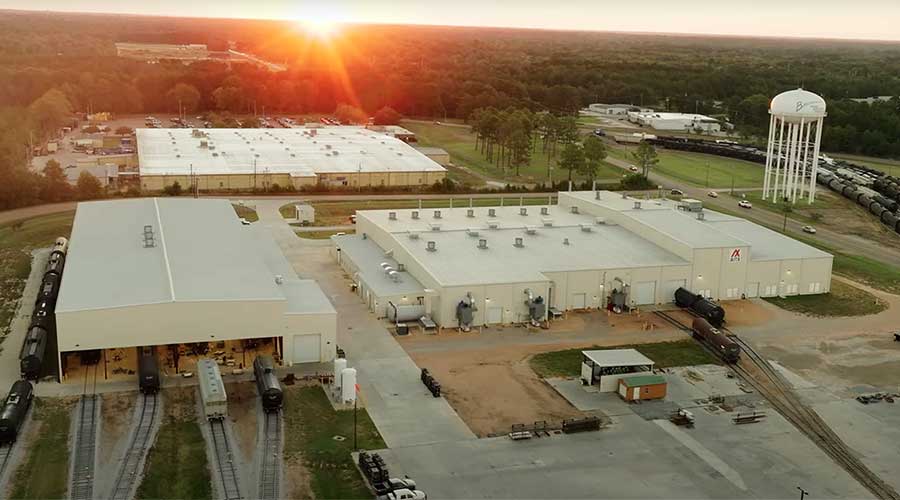Stay updated on news, articles and information for the rail industry
March 2020
Rail News: Mechanical
Locomotive technology 2020: What's next is now
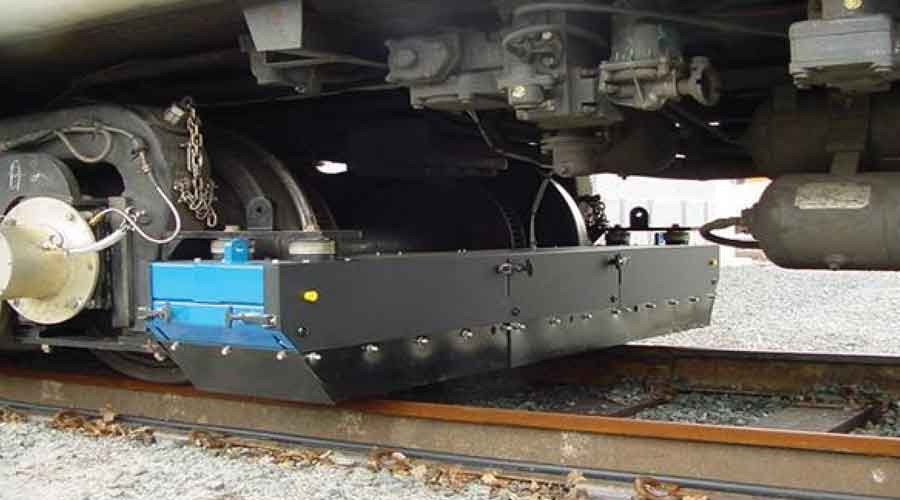
Compiled by Michael Popke
ENSCO Rail
Installed on locomotives, passenger trains and freight cars, the ENSCO Rail Autonomous Track Geometry Measurement
System offers a key advantage over traditional manned systems: It operates uninterrupted, more frequently and without an onboard operator, company officials said in an email.
The result: increased inspection frequency (because every train movement presents an opportunity to assess the track and detect defects sooner), reduced operational costs, higher inspection speeds and unimpacted railway traffic flow for data collection, they added.
“When using ENSCO Rail’s data analytics, railways can identify the highest risk areas of track network and optimize maintenance and renewal planning,” company officials said.
Progress Rail
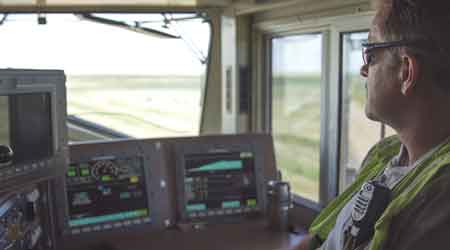
Progress Rail’s TALOS™ Energy Management system leverages machine learning and “massive” computing power to analyze and optimize train routes, company officials said in an email.
By adapting to train behavior, TALOS delivers higher fuel savings, reduced emissions, increased network capacity and improved train handling for safer operation, they said.
For full optimization, the company’s Automatic Engine Start/Stop solution monitors critical operating parameters during a locomotive’s idle operation, which safely and effectively shuts down the engine once all factors are satisfied, officials added.
Railhead Corp.
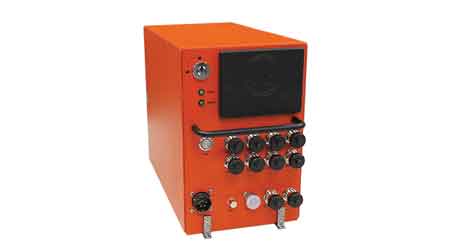
Railhead Corp. offers onboard remote monitoring and video systems for locomotives, cab cars and track vehicles. Installed on Class I, short line, and light-rail and commuter-rail networks worldwide, the systems process multiple data feeds from on-train event recording equipment to deliver fault alerts as they occur to control rooms and repair shops — resulting in effective condition-based maintenance and train operations management, company officials said in an email. This enables rail officials to know where their assets are at all times, and to benefit from real-time condition-based reporting on the health status of onboard systems.
Railhead offers a 4K system that supports up to 12 cameras, delivering what the company calls as “the clearest video quality on the market.” The LDVR-HD/4K recorder is designed to provide “superior” video streaming capabilities, is wireless-ready and will integrate with crash-hardened memory modules and event recorders, officials said.
Together, integrated video and data streams from the LDVR — along with system data feeds from multiple on-train devices — enable railroads to add real-time data to the control-room overview, officials said. Access to this critical data can enhance the operator’s ability to make informed decisions in real time, they added.
Railserve
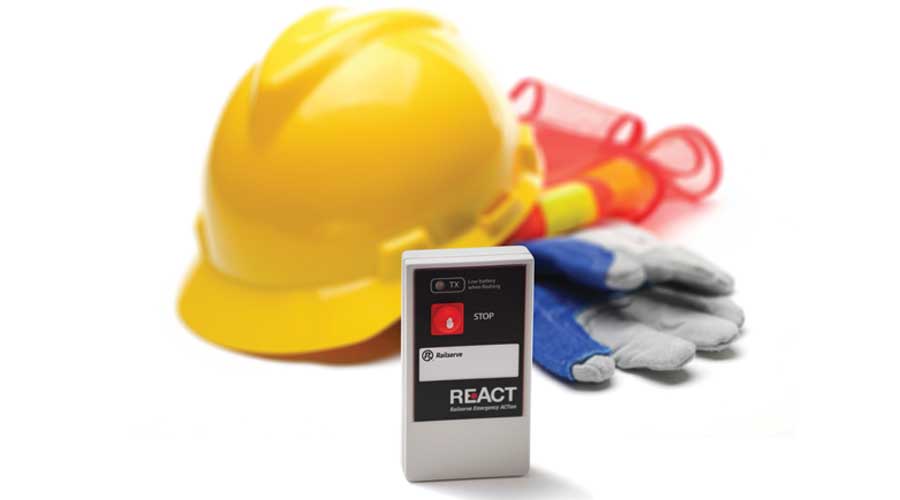
Railserve offers automation and safety devices designed to improve rail yard safety and performance. A safety device installed on all Railserve-owned and operated locomotives, REAct™ enables personnel on the ground to stop a train remotely by pushing a button on their safety vest. Meanwhile, Spike Ease is a portable, lightweight, battery-operated spike removal tool that eliminates the need for hydraulics.
Additionally, the company is developing a “collision avoidance” device that uses radar/LiDAR technology installed on the end of a train to “see” an object in its path and alert the operator (or stop locomotive movement), company officials said in an email. The device received a patent in 2019 and will be tested for use at Railserve-switched locations.
Smart Hat — an all-in-one camera and GPS worn on a hardhat to transmit employee location/video in real time — also is in development, officials said. Beta tests have been completed, and further modifications on the patent-pending camera will be made before it can be deployed on Railserve’s own switching operations, they added.
Siemens
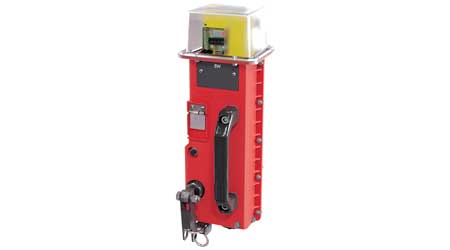
Siemens continues to expand its line of locomotive onboard products, targeting the “smart train” concept and focusing on intra-consist, train-to-train and train-to-infrastructure connectivity to enable more precise monitoring, control, and management of trains and freight throughout the railroad, company officials said in an email.
Based on a powerful onboard unit and back-office server, Trainguard PTC features an advanced, high-performance computer built on a proven, safety-critical modular platform “with room to grow” in both computing power and input/output capabilities, company officials said in an email.
Siemens also offers a line of FRA-compliant crashworthy event recorders and alerters, which are designed to enable safe operation of freight locomotives and transit vehicles while gathering critical operational and diagnostic information that can be processed by data analytics tools.
The company also offers a suite of end-of-train telemetry products, including the new Trainguard EOT, which is designed to assist railroads in running longer trains safely. Trainguard EOT features an easy-to-operate Wi-Fi browser-based user interface.
Meanwhile, Controlguide CT Mobile is a rail-vehicle monitoring and tracking system designed to enable railroads and car owners to keep track of vehicle locations and conditions.
CTbox is a self-powered telematics hub that can be easily installed on rail vehicles, while
CTsensor is a family of sensors that monitor vehicle parameters (temperature, humidity, vibration, loading status, door status and more) and communicate to CTbox in a rail-car network.
Wi-Tronix LLC
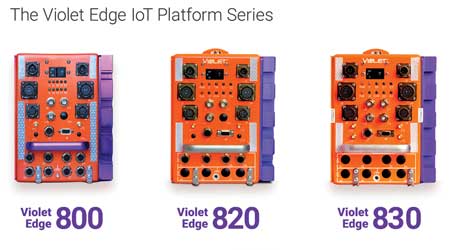
Wi-Tronix LLC’s Violet Edge IoT Platform integrates multiple functions into a single platform built specifically for rail, and can include an event recorder with crash-hardened memory module, a digital video recorder, a positive train control event recorder and business-critical data acquisition. Three models are available.
The company’s products provide information alerts and reports designed to reduce fuel costs, improve asset utilization, help customers monitor rules compliance and more, company officials said in an email.
Wi-Tronix locomotive products also can reduce inbound inspection times by proactively planning and routing locomotive maintenance with dashboards, reports and scorecards to optimize mechanical maintenance, officials said. They also can provide real-time alerts for emergency events such as engineer-initiated emergencies, mainline stoppages and hard coupling.
ZTR Control Systems
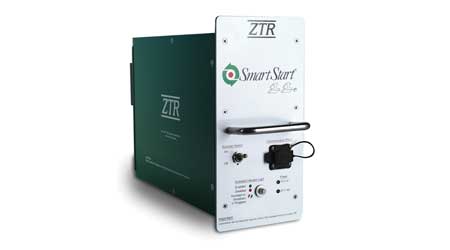
From small enhancements to full-control system upgrades, ZTR Control Systems offers a variety of upgrade options designed to improve reliability and extend the life of a locomotive for an additional 10 to 15 years, company officials said in an email. Options include the NEXSYS™ III-I, a microprocessor-based control system that offers advanced control options, locomotive adhesion improvement and integrated automatic engine stop-start (AESS) technology for locomotive rebuilds and/or electrical system upgrades.
ZTR’s NEXSYS™ HHP is designed to replace and improve the reliability of OEM control systems on Dash 8 and Dash 9 locomotives. The NEXSYS HHP is a modern control system that improves reliability, is simple to install and “connects fleets to the Internet of Things,” officials said.
KickStart™ uses super capacitor technology to supplement locomotive batteries, reduce battery strain during engine start, increase cranking speed and improve cold-weather performance reliability. Combining KickStart with the new ZTR Battery Optimization Kit™ can further improve and extend battery health.
In addition, SmartStart® AESS provides a return on investment of fewer than 12 months and delivers fuel savings of up to $25,000 per year per locomotive, officials said. And InteLevel® provides high-accuracy fuel measurement technology designed for the mechanical, environmental and temperature extremes of the railway industry.
Michael Popke is a Madison, Wisconsin-based freelance writer. Email comments or questions to prograil@tradepress.com.


 2025 MOW Spending Report: Passenger-rail programs
2025 MOW Spending Report: Passenger-rail programs
 Gardner steps down as Amtrak CEO
Gardner steps down as Amtrak CEO
 Guest comment: Oliver Wyman’s David Hunt
Guest comment: Oliver Wyman’s David Hunt
 Women of Influence in Rail eBook
Women of Influence in Rail eBook
 railPrime
railPrime





